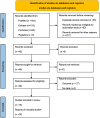Meta-analysis of early-life antibiotic use and allergic rhinitis
- PMID: 36407870
- PMCID: PMC9635271
- DOI: 10.1515/med-2022-0459
Meta-analysis of early-life antibiotic use and allergic rhinitis
Abstract
This meta-analysis aimed to investigate the correlation between early-life antibiotic use and allergic rhinitis. PubMed, Embase, and the Cochrane Central Register of Controlled Trials databases were searched for available studies. Eighteen studies covering 1,768,874 children were included. Early-life antibiotics were associated with an increased incidence of allergic rhinitis (effect size (ES) = 5.00, 95% confidence interval [CI]: 4.88-5.13; I 2 = 95.7%, P heterogeneity <0.001). In Asia, Europe, and the USA, the incidence of allergic rhinitis in the antibiotic group was higher than that in the no medication group (Asia: ES = 3.68, 95% CI: 3.38-4.01; Europe: ES = 3.20, 95% CI: 3.00-3.42; USA: ES = 3.68, 95% CI: 2.74-4.95). Compared with the no medication group, children who received antibiotics in the first 1 week of life (ES = 5.75, 95% CI: 2.18-15.18), first 1 year of life (ES = 3.37, 95% CI: 3.20-3.55; I 2 = 64.2%, P heterogeneity = 0.001), or first 3 years of life (ES = 5.21, 95% CI: 2.42-11.19) had a higher incidence of allergic rhinitis. No individual study influenced the estimates of the meta-analysis. The funnel plot showed moderate symmetry and low publication bias. In conclusion, the use of antibiotics in early life was associated with allergic rhinitis. Still, most included studies analyzed antibiotic exposure as a dichotomous variable, without information on the type and dosage of antibiotics.
Keywords: allergic rhinitis; antibiotics; early life; meta-analysis.
© 2022 Xiang Liu et al., published by De Gruyter.
Conflict of interest statement
Conflict of interest: Authors state no conflict of interest.
Figures







References
-
- van den Anker J, Reed MD, Allegaert K, Kearns GL. Developmental changes in pharmacokinetics and pharmacodynamics. J Clin Pharmacol. 2018;58(Suppl 10):S10–25. - PubMed
LinkOut - more resources
Full Text Sources
